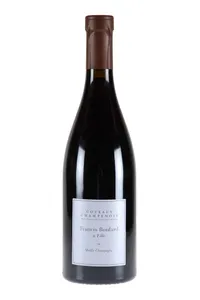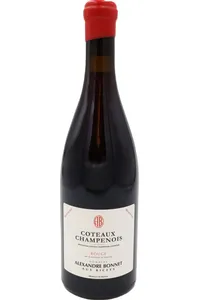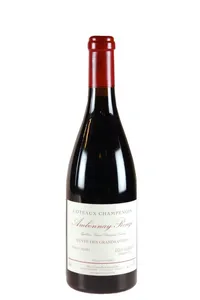Free delivery from Fr. 300 of purchase or 18 bottles, otherwise Fr. 15

Champagne
‘Come quickly, my brothers, I am drinking stars!’ exclaimed the monk Dom Pierre Pérignon when he tasted champagne for the first time! Timeless, a symbol of celebration, seduction and effervescence itself, champagne is a true medium, often confined to the spirit of celebration or, as Winston Churchill proclaimed, ‘necessary in defeat and compulsory in victory’ ...
A little history
It is often said that necessity is the mother of invention. In his book, ‘L'éclair d'un bonheur’ (A Flash of Happiness), historian Jean-Pierre Devroey recalls that in 1692, it froze on 22 July in Champagne and snowed on 9 October; that year, the grape harvest took place in mid-November! We can therefore assume that in these rather unusual circumstances, fermentation was often interrupted as winter approached and resumed the following spring. The wine, stored in barrels at that time, ‘reworked’ and this resumption of fermentation resulted in the release of carbon dioxide. This phenomenon led to French aristocrats falling out of love with these wines, but at the same time laid the foundations for sparkling wine! It was around 1695 that producers in the Reims region began to use pressure-resistant bottles and special corks.
Today, the Champagne vineyard is very diverse, covering 34,300 hectares, 10% of which belongs to the houses and 90% to winegrowers. The subsoil is mainly limestone, which promotes drainage and brings out a certain minerality. The Champagne AOC now covers four sub-regions: the Marne Valley, the Côte des Blancs, the Côte des Bar and the Montagne de Reims. This appellation and AOC are now recognised throughout the world, far beyond the borders of France.
Blending champagne
This is the cornerstone of most champagnes and the expertise of the great houses. With the exception of vintage wines or cuvées from single vineyards or plot selections, champagne is above all a blended wine. You could even say that it is the essence of champagne. Synergy could be the key word for blending: between the different crus, grape varieties, vintages and reserve wines (from previous years) to create the cuvée in successive stages. It is the blending of these different wines that will give birth to your champagne.
In all cases, the whole must be better than each of the parts taken individually, and even better than the simple sum of its parts. Between the desire to perpetuate, for most of the major brands, a house style that is immediately recognisable to the connoisseur and a more creative approach, the range is wide. Choosing the grape varieties (Pinot Noir, Chardonnay, Pinot Meunier, etc.) and their proportions in the final product, assessing the quality and fermentation of each wine, and adjusting the flavours: this is the work carried out century after century by the greatest Champagne houses to get the most out of the fruit.
Blanc de... blancs or blanc de noirs
Seven grape varieties are currently authorised in Champagne. Three of them dominate: Pinot Noir (40%), Pinot Meunier (32%) and Chardonnay (29%). Most champagnes are made from a blend of black and white grapes. When made exclusively from red grapes (Pinot Noir and/or Meunier), it is called blanc de noirs. Otherwise, when made from Chardonnay grapes, which is usually the case, it is called blanc de blancs. This is because the direct pressing method used in Champagne, which involves no contact between the juice and the skins, produces a clear juice from red grapes, as the colour pigments (anthocyanins) are found in the grape skins.
BSA
Brut sans année. This is the opposite of a vintage champagne. The result of blending several vintages with a varying percentage of reserve wines, Brut sans année accounts for 90% of champagne sales and is most often characterised by a standard style corresponding to the house taste. Many houses in this region of France use this process, including Laurent Perrier, Moët & Chandon, Ruinart, Dom Pérignon, Louis Roederer, Drappier, Bollinger and many others.
Rosé champagne
There are two ways to make rosé champagne: either by short maceration (24 to 72 hours) of the juice with the skins, or by blending still white and red wines. Macerated rosés generally offer more structure and depth than those obtained by blending. Rosé champagne (brut or not) can also be of high quality and, depending on the producer, offer an excellent tasting experience and an impressive variety of aromas. There can also be a wide variation in price for this type of rosé product.
Dosage
After disgorging – the stage where the deposit resulting from the transformation of sugar into alcohol is expelled from the bottle – comes the moment of dosage. This can be used to mask imperfections (to compensate for a weak raw material), but it can also be the chef's pinch of salt, that little extra addition that gives the whole dish more depth.
European regulations therefore determine the types of dosage:
Brut nature champagne: between 0 and 3g/litre
Extra-brut champagne: between 3 and 6g/litre
Brut Champagne: between 6 and 12g/litre
Extra-dry Champagne: between 12 and 17g/litre
Dry Champagne: between 17 and 32g/litre
Demi-sec Champagne: between 32 and 50g/litre
Sweet Champagne: more than 50g/litre
Serving champagne
As with other wines, the container plays a very important role here. Champagne glasses should be avoided. A tall flute or even a tasting glass such as MasterGlass or Sydonios are ideal. Some champagnes can be decanted, especially if they have been recently disgorged (see the label). In this case, it is important that the temperature of the champagne and the decanter are the same.
Discover our selection of champagnes on our website, at all prices (from CHF 26) and for all tastes. We offer half bottles, classic 75cl bottles and even double magnums.
4 items

Coteaux champenois, Mailly-Champagne, F. Boulard - 2019
Coteaux Champenois

Coteaux Champenois rouge, Alexandre Bonnet - 2021
Coteaux Champenois

Ambonnay rouge, Cuvée des Gds Côtés, Egly-Ouriet - 2023
Coteaux Champenois

Coteaux Champenois, Bouzy rouge, Benoit Lahaye - 2022
Coteaux Champenois
Timeless, a symbol of celebration, seduction and effervescence itself, champagne is a veritable medium, often confined to the festive spirit or, as Winston Churchill proclaimed, ‘necessary in times of defeat and obligatory in times of victory’...
Champagne is a wine, but also a region (in France, although Switzerland also has a commune of the same name! A “Brut” champagne, for example, means that between 0 and 3g of sugar or liqueur have been added, so it's like a chef's pinch of salt; a blanc de blancs cuvée is made from white grapes, and if it says blanc de noirs on the bottle, it's a white wine made from red or black grapes. The cuvées are often not labelled with a vintage year, as “reserve” wines are added each year to create a cuvée that matches the house style. These are known as cuvées rondes, which is why each year we find bottles of Louis Roederer, Chandon or Ruinart, for example. Then there are the cuvées that highlight a particular terroir, vintage, format (magnums or larger) or special edition - for example, the Dom Pérignon cuvée with its pink Lady Gaga-style case. These limited editions generally come at a higher price.
At CAVE, we're big fans of winegrowers' champagnes, which highlight the unity of place and illustrate the wonder that Dom Pérignon felt when he tasted champagne for the first time: ‘Come quickly, my brothers, I'm drinking from the stars’, he is said to have exclaimed.